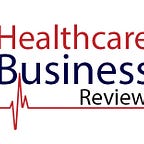How Technology Facilitates Enhanced Healthcare Compliance
Current HIPAA guidelines need healthcare entities to give electronic medical records within 36 hours of the request, unlike the previous version with no time limit. What the rule implies is that cloud-based healthcare infrastructure is a must-have for every provider with more than one location.
FREMONT, CA: Technology can make a significant impact when it is put forward on the right problems and offered meaningful challenges. The course makes technology an ally in the fight for a more productive, inclusive, and cost-effective healthcare industry.
Technology has a part to play in helping healthcare providers accomplish and stay in compliance. Below are three ways:
1. Rendering Historical Data for Compliance and Accountability
Compliance in the healthcare business is crucial for achieving the best possible patient outcomes. But it is also vital to keep hospitals, nurses, doctors, and specialists safe in the event if something goes wrong or a patient experiences accidental harm. Healthcare providers might need access to historical data to help iron out which side knew what details, and when.
The rich historical data does not only keep matters of compliance and accountability apparent within an organization. It is also a way for healthcare institutions to lay the groundwork for more impressive analytical modeling and progress outcomes even further by drawing on anonymized historical patient records.
2. Securing Patient Records at Rest And In Transit
On the one hand, the technology that one relies on is vulnerable to cybercrime and other disruptive influences.
But, on the other, technology also offers protection from the same threats; one significant consideration as security and privacy regulations in healthcare markets become ever more stringent.
Amongst other things, remaining in full compliance with HIPAA requires the need for healthcare organizations to use meaningful security practices to all shared electronic documents. To meet the compliance requirement, healthcare providers move to document storage solutions with encryption built-in. The solutions cover every transmission mechanism along with email and instant message. Besides, providers can decide whether to encrypt documents sent over email based on the degree of privacy.
3. Making Document Retrieval Fast And More Accessible
One compliance rule under the most recent modification of HIPAA concerns the speed at which healthcare organizations should offer patients with electronic copies of their medical records after being posed to do so. Current HIPAA guidelines need healthcare entities to give electronic medical records within 36 hours of the request, unlike the previous version with no time limit. What the rule implies is that cloud-based healthcare infrastructure is a must-have for every provider with more than one location. Additionally, the technology helps offer ultimate assurance that records are protected in the occurrence of a data loss and can be retrieved at any time when patients make an information request.
